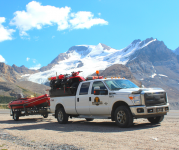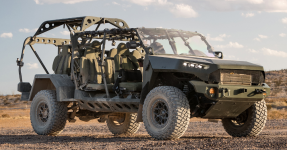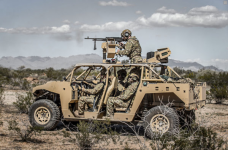There are a lot of good arguments for removing tanks from the CAF. The argument that they were useful in Afghanistan is valid only because they provided an overmatch capability for the situation. There was literally no way the Afghans could fight back against a modern MBT. And of course, we had no other options for direct fire, everything else we had was indirect.
It seems pretty clear that the main enemy of an MBT in modern battlespaces is either aircraft or precision fires. There are literally dozens of videos from Syria or Armenia showing how UAV's coupled with precision fires find and destroy armour. The Ukrainian situation has also made it clear that this is an extremely deadly threat.
Removing tanks, going full middleweight, UAVs for scouting and precision fires. Direct fire will be ATM. Quite literally what the USMC is trying to do. It's a strong vision, and has quite a bit of merit.
Canada can't and doesn't need to be all singing and all dancing.
Militaries all over the world are in the horrible habit of preparing to fight their last war. Very few are good at planning & equipping for what they 'think' will be their next war. The US has done a very impressive job, thus far, of recognizing that pattern and trying to fix it.
Whether a conflict between the US & China kicks off or not, the fact that they are organizing and equipping themselves as if that fight WILL happen is a change in mindset, even from Iraq 2.0.
Canada went from "We are getting rid of tanks!" to "Tanks could be useful, we will keep tanks and deploy them." to "We need modern tanks, ASAP!" all in a short period of time, by military thinking/procurement standards. We are, unfortunately, a very reactive organization with leadership that is appointed based on their willingness to STFU and not cost the government any more money than they need to.
Canada absolutely doesn't need to be all singing and all dancing. I couldn't agree more. I think we should decide what specific things we want to be
really good at, and
excel at being really really good at those things. A ship with a dozen or two Canadian MBTs pulling into harbour a month or so after the conflict erupts isn't really doing anybody any good. (My 0.02)
Like you said, the USMC is trying to divest themselves of MBTs and drastically enhance the lethality of it's small units, precisely because they feel that in a peer conflict, that will serve them better.
Let's look at other conflicts that have happened recently - Ukraine, Syria, Armenia, etc. What worked well, and what didn't work? Was there a noticeable game changer? (Ukraine and Armenia, the huge and noticeable game changer was suicide drones/loitering munitions.)
Cheap enough for 2nd world countries to procure in mass quantities, and expend without any fuss - and the result is one less enemy tank. They can be built faster, cheaper, and be deployed with less training and without risking personnel - and the result is a severely depleted enemy armoured force. The CAF should be saying "Hmmmmm, this is worth looking into, right now."
Same conflicts listed above, ATGM capabilities. A modern, accurate, reliable ATGM that kills enemy tanks quickly - prefer the system to be fire and forget. A few solid systems out there right now. Plenty of video evidence to show how a non-professional soldier can figure it out, and take out enemy tanks. (Killing the crew, which takes a while to train, and several million dollars worth of hardware that isn't quickly replaced.)
We have the industry, and budget (believe it or not) to be one of the most lethal armies in the world, just by focusing on what could be our strengths, and divesting ourselves of capabilities that we most likely won't require. Keep it simple. (Even if we were tasked with a Mali deployment tomorrow, the LAVs and TAPVs would be the prime fighting vehicles I would imagine.)
Sure, the public might laugh or have comments about "Our Army doesn't have tanks!" Oh well. Who cares. This is the same public that quite often says "I didn't even know we had a Navy!" despite the Navy being in the news fairly often. One just has to spend a few moments reading the comment section on CBC to be reminded that it isn't worth caring about what the public thinks in regards to these decisions - they aren't the ones deploying.






